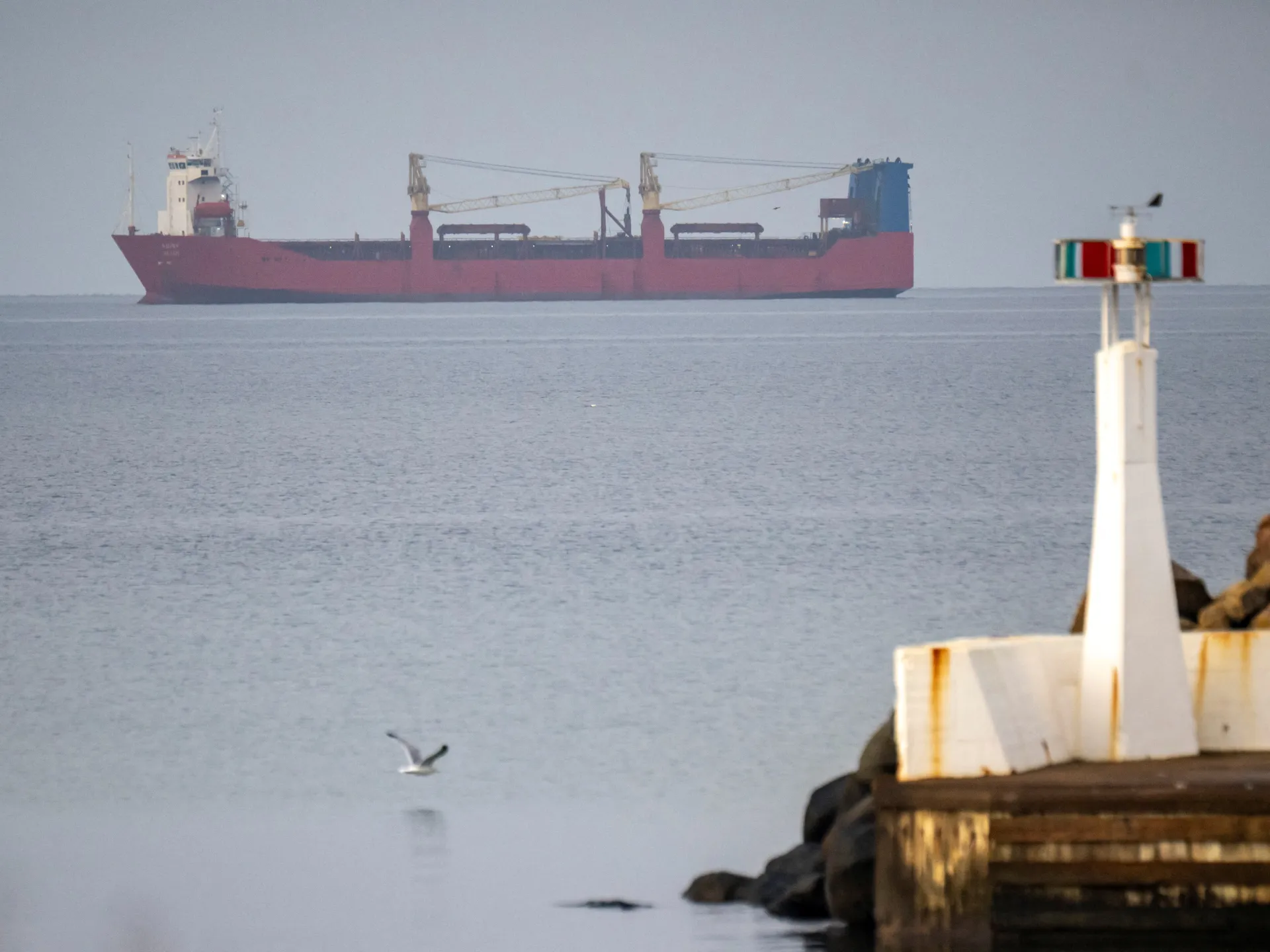Swedish authorities board sanctioned Russian ship in national waters | News
Authorities board vessel off Swedish coast after it suffered an engine failure.
Published On 21 Dec 2025
Sweden’s customs service has said that authorities boarded a Russian freighter that anchored in Swedish waters on Friday after developing engine problems, and were conducting an inspection of the cargo.
The owners of the vessel, the Adler, are on the European Union’s sanctions list, Martin Hoglund, spokesman at the customs authority, said on Sunday.
Recommended Stories
list of 4 itemsend of list
“Shortly after 0100 (00:00 GMT) last night we boarded the ship with support from the Swedish Coast Guard and the police service in order to make a customs inspection,” Hoglund said. “The inspection is still ongoing.”
Hoglund declined to say what the customs service had found on board the ship.
According to ship-tracking service Marine Traffic, the Adler is a 126-metre-long, roll-on, roll-off container carrier. It is anchored off Hoganas in southwest Sweden.
EU and US sanctions
In addition to the Adler being on an EU sanctions list, the vessel and its owners, M Leasing LLC, are also both subject to US sanctions, suspected of involvement in weapons transport, according to OpenSanctions, a database of sanctioned companies and individuals, persons of interest and government watchlists.
Hoglund said the ship had left the Russian port of St Petersburg on December 15, but he said customs did not have any information about its destination.
The night-time operation was led by the Swedish Customs Administration along with the coastguard, National Task Force, Swedish Security Service and prosecutors.
In a previous incident, the Adler was boarded by Greek forces in the Mediterranean in January 2021. The operation was carried out under the auspices of the EU’s Operation Irini, which monitors the United Nations arms embargo on Libya.
